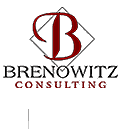


|
Issue
# 6 - Organization Design - Part 1
In this issue, you will find: 1. An introduction to Organization Design and information about Strategy 3. Pointers to additional information on this topic ______________________________________________________ 1. INTRODUCTION: WHAT IS ORGANIZATION DESIGN & WHY IT'S A NECESSARY COMPETENCE FOR SENIOR MANAGERS Organization Design examines the factors that must be considered and the processes that are required in the design, development, and implementation of an effective organization. It is based on the premise that organization design goes beyond the structure of the organization--the lines and boxes and arrangement of people and functions. It includes such factors as information and reward systems; management and decision making processes; mission, vision, and values; business strategy; and people. It requires that these elements be considered and weighed in relationship to each other, that trade-offs be made and balanced, and that the best fit of all the elements are determined. It assumes that the infrastructure of an organization is a source of competitive advantage and that the failure to attend to designing and sustaining an infrastructure that best supports the business and human needs of the organization contributes significantly to its dysfunctionality and decline. There are several well-known models that depict the elements or variables that must be considered. Our favorite is the Star Model (Lawler, 1996). As the name implies, it has five components: Strategy, Structure, People, Processes, and Rewards. When each of the five is connected to all of the others, the picture is a pentagon with a star inside of it. In the center is the word Fit. The other models draw on the similar concepts and may have additional elements. (The 7-S Framework by Mc Kinesy and the Forum Corporation's model are two examples.) When an organization wants to make significant changes in its purpose, outcomes, and/or functionality, then a major, comprehensive redesign process is called for. If the required changes are less sweeping, or some aspect of one of the elements changes (for example, strategic modifications such as targeting a new market, or a reduction in the size or mix of the workforce), then each of the other elements should be checked for fit Each must be modified as necessary to ensure that the organization will still "work" in light of these new developments. That's because systems are interdependent by nature. Changes in one part of a system create corresponding changes in other parts. Sometimes these secondary changes go undetected until they have caused unanticipated and often adverse consequences. There are two steps in the process of Organization Design: the first is systematically looking at the elements-separately and together-and literally figuring out how the pieces and the whole need to be arranged and constructed to best enable the organization to achieve its vision, mission, and goals. The second is the implementation of the new design. Both of these steps require knowledge, discipline, and patience. Often managers feel pressed to move faster than this work requires. Frequently, they mistake Structure for Design, hoping that a reorganization will solve the problem(s) and assuming that the other variables can or will stay unchanged. Sometimes, the analysis and design are well done but the implementation is poorly executed, or the intended changes are announced and employees are left on their own to determine how to make the changes or adjustments. In large, complex, and fast-changing organizations, good ideas, the ability to innovate, access to technology, and talented people are the price of admission. What differentiates organizations is their ability to hold, control, deploy, and manage the interdependencies and trade-offs among the human, technical, and functional resources; to align individual and organizational goals and values; and to mobilize and utilize these resources most effectively in support of the strategy. The organization system is the framework that holds the resources, and Organization Design is a primary tool for defining and creating the required alignment, differentiation and integration, relationships, and processes within it.
The top point on the Star is Strategy. It is the element from which all others aspects of the organization design flow. Strategy includes the mission (why the organization exists and what its overarching objective is), vision (the desired future state and what will be different as a result of the organization's contribution), goals and objectives, tasks, and values. It defines where "there" is for the organization and also provides the map to the destination, including the possible and preferred routes and the various stopping off points along the way. It shows the relationship among four important variables that contribute to organization effectiveness and success: the mission, core competencies, organization capabilities, and the external environment. A
well-conceived and succinct mission statement provides direction,
guidance, and feedback to the organization. It enables employees
to make informed choices and decisions about the best use of resources
relative to the target or goal. Core competencies are the basic
technologies and skills required for the organization to succeed
in its chosen business-what the organization needs to be good
at. If the core competencies are difficult for others to duplicate
then this will be a source of competitive advantage. Core competencies
are an aspect of Core capabilities. Core capabilities are that
unique combination of knowledge, wisdom, and ability that is the
basis of organization intelligence. It's what's required to focus
the resources and coordinate the activities of the organization
in ways that are specifically and strategically targeted at the
chosen target market and allow them to be responsive to the larger
environment. The strategy is the context for designing all other elements of the organization. The key question is, "What sort of structure, processes, people, and rewards do we need in order to execute this strategy?" More about each of these in the next two issues. ______________________________________________________ 2. From the Ground Up: Six Principles for Building the New Logic Corporation by Edward E. Lawler III (Jossey-Bass, 1996) From the Ground Up offers us a "big picture" view of how to integrate the best of proven organization design strategies in order to create successful organizations. While many once-revered companies stubbornly cling to old ways and structures, others are accepting a new logic of organization design and management-and they are advancing ahead of the others. Lawler shows us how today's top companies are replacing quick-fix, single-dimension techniques of reengineering, TQM, and team building with a complete overhaul for total organizational transformation. Using the Star Model (described in Section 1 of this newsletter) as a foundation, we are introduced to the differences between the "old logic" and the "new logic" of designing and managing organizations:
OLD: Organization is a secondary source of competitive advantage
OLD: Bureaucracy is the most effective source of control
OLD: Top management and technical experts should add most of the
value
OLD: Hierarchical processes are the key to organizational effectiveness
OLD: Organizations should be designed around functions
OLD: Effective managers are the key to organizational effectiveness Although he discusses each of these six principles separately, Lawler reminds us that the principles represent an integrated approach. Thus, they should not be adopted piecemeal. Parts Two & Three of the book are collectively entitled "Putting the Principles to Work." They help us do just that by describing how each of the elements of the Star Model fits within the new logic, and what we must do in order to implement them. We are shown in a pragmatic way how strategy, structure, people, processes, and rewards must fit together in order to convert the new logic from a set of principles to a concrete set of practices and structures that organizations can use to make themselves more effective. Part Four focuses on the complex and critical tasks of managing organizational change. Because an existing organization typically must alter all points of the star in order to adopt the new logic and become a high-performance organization, the change process can be difficult to manage. But when properly conceptualized, designed, and led it can give an organization capabilities and competencies that are difficult to copy - which will provide a powerful source of competitive advantage. ______________________________________________________ 3.Web sites and Other Resources we've found about this topic include: *
The Association for the Management of Organization Design www.amod2000.org * READINGS: Nadler,
D.A., Gerstein, M.S., Shaw, R.B., & Associates. (1992). Organizational
architecture: Designs for changing organizations. San Francisco:
Jossey-Bass Publishers. Galbraith,
J. (1982, Winter). Designing the innovating organization. Organizational
Dynamics, 5-24. Greiner,
L. (1972, July-Aug.). Evolution & revolution as organizations
grow. Harvard Business Review, 64-73. Galbraith,
J.R. (1995). Designing organizations. San Francisco: Jossey-Bass
Publishers.
|
||||||||
|
||||||||